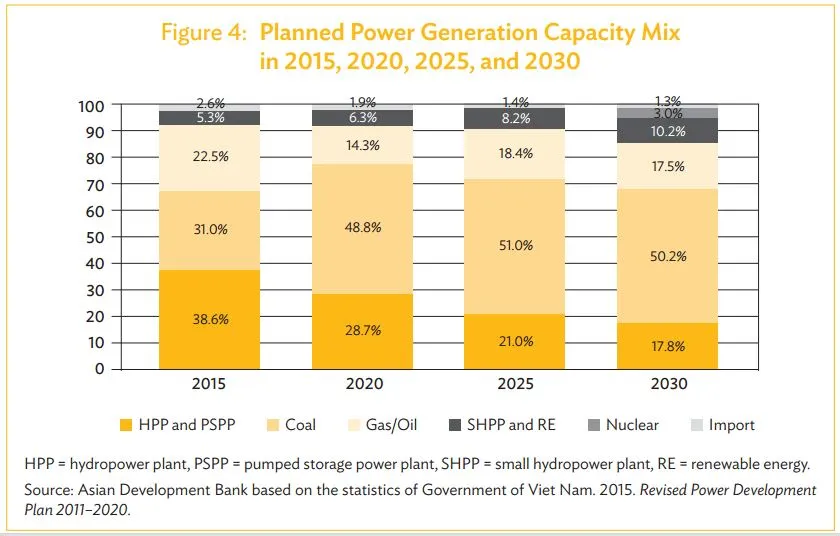
Vietnam slapped with big threats amidst unstoppable energy demand surge
How will the country maximise its domestic energy resources?
In its recent country assessment report, ADB said that Vietnam's energy sector in its next stage of development will face the following challenges in meeting the rapidly rising demand: coping with the rapid change in energy supply structure; maximizing the use of domestic energy resources efficiently and lowering imports, adopting new technologies; mitigating environmental impacts and achieving the set targets in sustainable green development; enhancing energy efficiency; strengthening institutional capacities; diversifying energy supply, including that of renewable energies; and increasing energy prices to its socially and environmentally acceptable level to cover full costs.
The core energy sector issues include poor energy resources management, inadequate infrastructure, insufficient revenue for financial autonomy of the power and coal subsectors, and lapses in environmental management in the sector. Poor energy resource management Vietnam does not have a holistic energy sectorwide policy that sets out a systematic and long-term approach to integrated energy planning, policy formulation, and sector development. In addition, an integrated energy master plan is yet to be prepared.
As a consequence, energy resource management is inefficient and there is a serious lack of infrastructure. The current development planning approach is largely focused on the development of the power subsector in isolation from coal, oil, and gas development planning, whereas the power subsector consumes major portion of these scarce resources.
Because of much reliance on energy based on coal, gas, and oil, Vietnam will have a greater dependence on imported coal, natural gas, and oil, leading to more vulnerability and fluctuations in energy costs, thereby affecting its energy security.
A common drawback in many of the planning documents is a lack of detailed economic and financial analysis necessary to provide robust evidence as to how to utilize scarce resources most effectively.
With a firm national energy policy as a framework, the MOIT will be better placed to undertake its responsibilities for energy planning and strategic guidance, particularly to enforce their implementation. Hence, formulation of a long-term national energy sectorwide policy and energy master plan is the need of the hour. The MOIT has prepared the content of the energy master plan and is waiting for government approval to initiate the study Inadequate Infrastructure Huge investments are required to develop infrastructure to meet the rapidly increasing energy demand.
In the oil and gas subsectors, there is a big involvement of international companies. However, the regulatory environment in Vietnam still has several aspects that are disconcerting to private sector investors: the dual role of PetroVietnam, as a commercial entity and an instrument of state policy, is confusing and private partners face difficulties in distinguishing between the two roles.
The same difficulty is likely to arise in the coal subsector, as Vinacomin depends substantially on joint ventures with private partners. In the power subsector, mobilization of private sector financing is still a challenge. Insufficient revenue in the power and coal subsectors Because of inadequate tariffs, the revenue is not sufficient for financial autonomy of the power and coal subsectors.
The government has committed to gradually orient price setting toward a market-based approach, and legal frameworks are in place for increasing the pricing of coal, oil, gas, and electricity. However, the recent increases in coal price and retail electricity tariff were just to catch up with the inflation rate, but in constant value, they are still considered to be priced below the cost of production.
In the power subsector, the electricity tariff has been set at a low level for many years, thereby seriously undermining EVN’s financial position and private sector investments in the power subsector. ADB and the World Bank advisory consultations have prompted the government to decide appropriate electricity tariffs to cover production, transmission, and distribution costs, and also to facilitate the financial recovery of EVN.
It is expected that electricity prices will be increased at an appropriate rate for all tariff categories to ensure cost-reflective pricing in the medium term. In the long term, the government aims to have prices that would reflect changes in the international prices of fossil fuels. Implementation of competitive wholesale and retail markets and price liberalization in the long term will address this issue.
Currently, ADB is providing technical assistance for drafting a new circular on transmission tariff, which will allow NPT to fully recover its costs and capital investment through revenue. It is expected that regulations will be in place by 2016 allowing NPT to implement a full cost-recovery tariff and charging structure.
The rapid expansion of Viet Nam’s energy sector is accompanied by significant environmental impacts. Increased coal-fired power generation worsens the environmental concerns. Without investments in efficient and clean thermal technologies, there will be huge environmental impacts. It is necessary to reinforce environmental management at project and strategic levels, and to strengthen regulatory compliance for environmentally sustainable management of natural resources.
The coal development plan 2012–2020 indicates that the development of the coal industry must be closely aligned with ecological–environmental protection and conservation, harmonization between food security and energy security, safety in production, and strengthened security in the coal mining areas. The most recent government initiative, National Green Growth Strategy,39 also identifies energy and transport sectors as priorities for reduction of greenhouse gas emissions and sets out clear goals for (i) reducing greenhouse gas emission intensity and promoting the use of clean and renewable energy and (ii) enhancing green lifestyle and sustainable consumption. However, the progress has been slow in achieving the set targets both in coal development plan and green growth strategy.


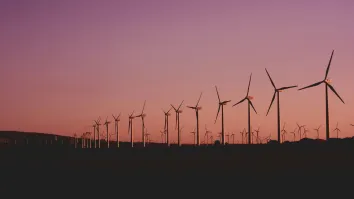
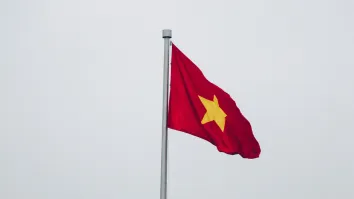
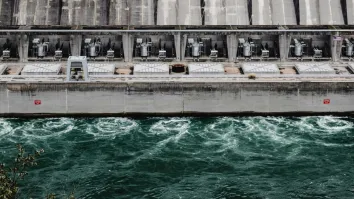
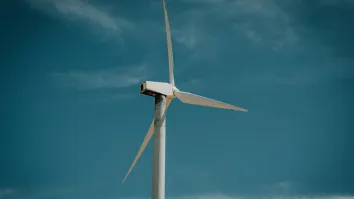













 Advertise
Advertise







